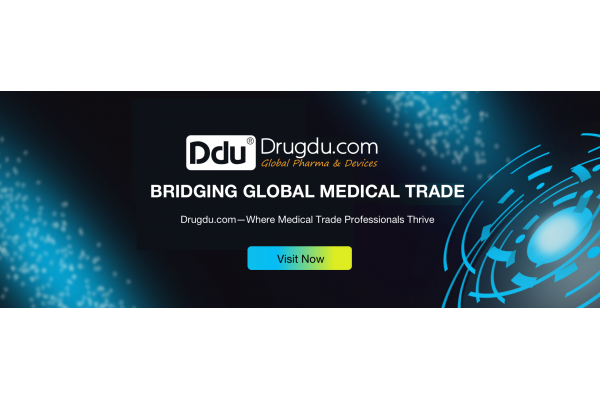【EXPERT Q&A】Why is it difficult for generic drugs to reach the level of original drugs?
April 14, 2025
Source: drugdu
 227
227
Drugdu.com expert's response:
The reasons why generic drugs often struggle to fully match the quality of brand-name (originator) drugs involve multiple aspects, primarily including differences in the research and development (R&D) process, manufacturing techniques, quality control, clinical trials, and patent/regulatory factors. Below is a detailed analysis:
I. Differences in the R&D Process
Lengthy R&D Timeline for Originator Drugs: Developing an originator drug from laboratory research to market approval typically takes 10–15 years and costs billions of dollars, involving rigorous clinical trials to verify safety and efficacy.
Different R&D Pathway for Generic Drugs: Generic drugs do not need to replicate the pre-clinical studies or clinical trials of originator drugs; they only need to demonstrate bioequivalence (similar absorption rate and extent in the body). However, this "equivalence" does not equate to "identity," and subtle differences may exist in drug metabolism and pharmacodynamics.
II. Manufacturing Techniques and Quality Control
Complexity of Manufacturing Processes: The manufacturing processes for originator drugs are refined over years and often highly confidential. Generic drug manufacturers may struggle to fully replicate these processes, leading to variations in key parameters such as drug purity, crystal form, and dissolution rate.
Excipients and Impurity Control: Originator drugs may use specially selected excipients to optimize stability and bioavailability. Generic drugs may not achieve the same level of excipient selection or impurity control.
III. Clinical Trials and Bioequivalence
Limitations of Bioequivalence Trials: Generic drugs only need to prove similar absorption speed and extent compared to originator drugs in healthy volunteers (typically requiring the 90% confidence interval for area under the concentration-time curve (AUC) and peak concentration (Cmax) to fall within 80%–125%). However, these trials do not fully reflect the drug's efficacy and safety in real patients.
Patient Population Differences: Originator drug clinical trials often cover broader patient groups, whereas bioequivalence trials for generic drugs involve only healthy volunteers, potentially failing to fully simulate real-world patient responses.
IV. Patent and Regulatory Factors
Patent Protection: Originator drugs are protected by patents, and generic manufacturers must wait for patent expiry before production. During this period, originator companies may continue improving their manufacturing processes, further enhancing drug quality.
Regulatory Standard Variations: Differences in regulatory standards across countries and regions may result in generic drugs of lower quality in certain markets.
V. Drug Characteristics and Dosage Forms
Narrow Therapeutic Index Drugs: For drugs with a narrow therapeutic index (e.g., antiepileptics, immunosuppressants), even minor dosage differences can lead to severe consequences. While generic drugs face higher quality control requirements for these drugs, complete avoidance of differences remains challenging.
Complex Dosage Forms: Complex formulations such as extended-release preparations, liposomes, or nanoparticles are more difficult for generic drugs to match in terms of manufacturing processes, potentially leading to inconsistent drug release profiles.
VI. Clinical Efficacy and Patient Feedback
Actual Efficacy Differences: Despite meeting bioequivalence standards, some patients may report that generic drugs are less effective or cause more side effects than originator drugs. This could be related to differences in drug solubility, absorption rate, or individual patient variations.
Patient Compliance: Although generic drugs are typically cheaper, patients may prefer originator drugs due to psychological factors or perceived differences in efficacy.
VII. Conclusion
While generic drugs are legally and regulatory required to be bioequivalent to originator drugs, differences may exist in actual production, quality control, and clinical efficacy. These disparities stem from multiple factors, including R&D processes, manufacturing techniques, clinical trial design, and drug characteristics. Although generic drugs offer a more affordable option for patients, originator drugs may remain preferable in certain cases, particularly for drugs with a narrow therapeutic index or requiring precise dosage adjustments.

Read more on
- 【EXPERT Q&A】How does the FDA of the United States classify medical devices? December 12, 2025
- 【EXPERT Q&A】What certifications are required for the export of pharmaceutical products? December 10, 2025
- 【EXPERT Q&A】What are the differences between medical device verification and medical device validation? December 8, 2025
- 【EXPERT Q&A】What certifications are required for the export of medical products to Malaysia? December 5, 2025
- 【EXPERT Q&A】When should the continuation registration process for medical devices be initiated? December 3, 2025
your submission has already been received.
OK
Subscribe
Please enter a valid Email address!
Submit
The most relevant industry news & insight will be sent to you every two weeks.



